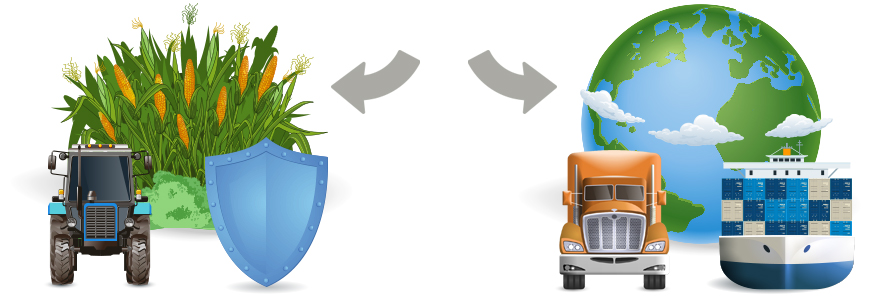Lesson 2: Pest Surveillance Methods
Topic 1: General Surveillance
In this topic, you will learn about general surveillance, the first step in any pest surveillance program.
Objectives:
- Be able to name the two end goals for operating a pest surveillance program
- Be able to name appropriate information resources for conducting general surveillance
Pest Surveillance Methods
A country has two main goals in operating a pest surveillance program:

Remember these two goals. They will help you understand the importance of creating and keeping accurate and transparent monitoring records.
Using the fire moth example, we will now guide you through the fundamental principles for operating a comprehensive surveillance program.
General Surveillance
To protect your country from both known and unknown pests, you will need to collect and apply both general surveillance and specific surveillance information, but let’s begin with general surveillance.
The goal of general surveillance is to use available information to: aid early detection of pests, support declarations of pest freedom, and report to other organizations such as the RPPO. Fieldwork is not usually performed in general surveillance. Instead, general surveillance involves gathering any current information about the pest you are monitoring from as many accurate and reliable sources as possible. These sources may be found within Importland, or you may have to obtain them from other countries. There are many sources of pest information with varying levels of validity. It is critical that the information you use to make decisions is traceable to a reliable source and either has been, or could be validated by other experts in the field.
A traceable source means that that the original source of the information has been referenced properly throughout your reports and records. For example, if a survey procedure described by Dr. Smith from a paper published in a scientific journal is used, then anyone reading any of the survey reports will know that it is Dr. Smith’s survey process.
Sources may include NPPOs, other national/local government agencies, peer reviewed scientific articles, research institutions, universities, scientific societies (including amateur specialists), producers, consultants, museums, the general public, current observations from scientific and trade journals, unpublished data from scientists, and international sources such as FAO and RPPOs. DO NOT use untraceable sources like Wikipedia or general pest websites that provide unclear reference information.
Click on the following fire moth information sources examples and read the summaries provided. This background information is crucial in helping to inform decisions about surveillance, as you will see later in the module.
Great job collecting information for your general surveillance! Fortunately, all the general surveillance information indicates that the fire moth is not yet present in Importland. Now you can use this information to help you make informed decisions to protect your own country and your trading partners.
Later in the module we will revisit the new potential pest, berry beetle. You will be asked questions about creating a surveillance program for this new threat.
To continue, select Topic 2 from the Topics menu above or click here.